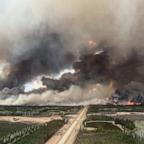EPA takes first steps toward climate change regulations
— -- Greenhouse gases represent threats to "public health and welfare," the Environmental Protection Agency said Friday in an "endangerment" finding that could lead to regulation of smokestack and tailpipe emissions causing climate change.
"This finding confirms that greenhouse gas pollution is a serious problem now and for future generations," EPA administrator Lisa Jackson said in a statement. The proposed finding would go into effect following a 60-day comment period, and covers six greenhouse gases, including carbon dioxide, widely produced as a byproduct of burning fossils fuels such as coal.
In 2007, the Supreme Court ruled that greenhouse gases are pollutants and subject to Clean Air Act regulation. The ruling required the EPA to decide whether global warming threatens human health, and if so, to take steps to cut such emissions.
"The release of EPA's proposed finding that global warming is a threat to public health and welfare is long overdue," said a statement from Sen. Barbara Boxer, D. — Calif., chairman of the Senate Committee on Environment and Public Works. "The Clean Air Act provides EPA with an effective toolbox for cutting greenhouse gas emissions right now," Boxer added in the statement, but she also called for Congress to pass legislation capping emissions of greenhouse gases and allowing corporations to buy and sell the rights tothose emissions in a greenhouse gas market.
In 2007, the Intergovernmental Panel on Climate Change concluded it is highly likely that greenhouse gas emissions were the major factor behind a roughly one-degree Fahrenheit increase in global average atmospheric temperatures over the last century, likely to lead to a three to seven degree rise by 2100. Greenhouse gases are transparent to sunlight, but trap heat, warming the atmosphere.
Among other ills from this warming noted in the finding, the EPA cites "increased likelihood" of:
• more frequent and intense heat waves, drought, wildfires, storms and floods.




